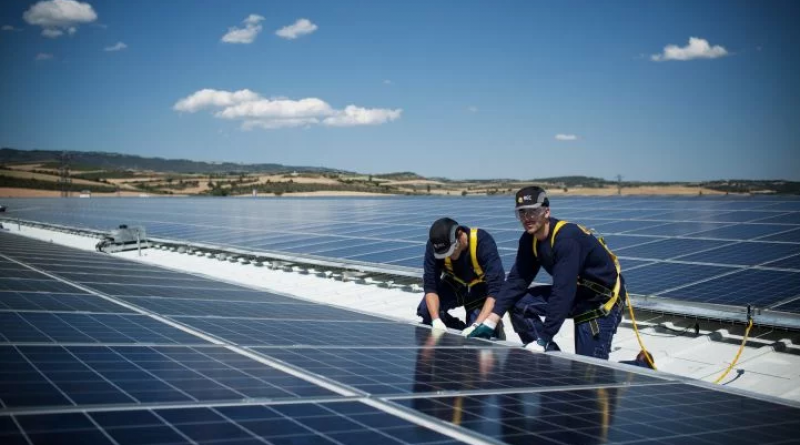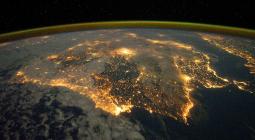Spain’s Other Solar Boom: Distributed Systems for Self-Consumption.

Hotels, farms and schools across Spain are putting up solar systems at an unprecedented clip to save money.
Regulatory changes have not only helped Spain reemerge as Europe’s biggest market for large-scale solar projects, but also animated a big new market for distributed solar systems aimed at on-site consumption.
Spain is thought to have around a gigawatt of self-consumption solar already installed, according to government figures cited by Lucía Dólera, project director at the Spanish Association of Renewable Energy Enterprises (APPA). Around 800 megawatts of this was installed in the last three years, half of it in 2019, Dólera said.
Although Spain's previous regulatory regime did not expressly forbid self-consumption of solar power, it discouraged such systems by imposing onerous administrative hoops for plant owners to jump through — and penalties of up to €60 million ($66 million at today’s rates) for non-compliance. The result, then, was a near-total lack of a market for smaller distributed solar systems in a country with huge potential for them.
But DG installations designed to supplement grid electricity supplies have blossomed since the Spanish administration repealed the country’s infamous sun tax in 2018.
The penalties for such systems have been abolished and a streamlining of the bureaucratic process has more than halved installation periods. Previously, an industrial system could face delays of nine months to a year from the planning application to commissioning, said Dólera; now, that period is more likely to be three to four months.
In 2019 Spain reclaimed the position as Europe's largest solar market — 11 years after last taking the top spot. After many years of little market activity, Spain installed around 4.7 gigawatts of new solar capacity last year, fueled mostly by auction-based large-scale projects.
Rapid payback time for solar systems
In addition to these large-scale arrays, self-consumption customers are increasingly attracted by the rapid payback of power from solar PV in Spain’s sunny climate.
According to Carlos García Buitrón, CEO and founder of the Madrid-based green power retailer Ecovatios, the cost of commercial-scale PV arrays in Spain is currently under €1 ($1.10) per watt for systems above 50 kilowatts, and as low as €0.70 ($0.77) above 500 kilowatts. This can result in a payback of as little as five years in some parts of the country, he said.
For residential systems, which tend to be between 1.5 kilowatts and 2 kilowatts in size, the cost is less than €2 ($2.22) per watt without storage, “but you can find much more aggressive offers in the market,” García said.
The payback for residential systems, before incentives, is around nine to 10 years, he said. In practice, though, many of Spain’s autonomous communities offer incentives that can significantly reduce the cost and payback period of rooftop solar.
In the capital Madrid, for example, local government grants can help bring the payback period for PV systems down to just four or five years, Dólera said.
C&I systems reap rewards
For now, the big winners in this market are small commercial, industrial and public sector consumers. Hotels, agricultural businesses, schools and the like are installing about 10 times more solar than residential customers, said García.
And while most of the electricity produced by solar panels is consumed on-site, the current legislation allows for systems of up to 100 kilowatts to feed into the grid without getting tied up in red tape.
This electricity is discounted from the customer’s bill at wholesale rates, which ultimately encourages self-consumption since the retail price of energy in Spain is usually two or three times higher due to taxes and fixed charges.
The 100-kilowatt cutoff point for simplified grid feeds hasn’t stopped some self-consumption customers going much bigger, García said.
Systems above 100 kilowatts can connect to the grid only via a third-party market intermediary such as Ecovatios, but “we’re also seeing growing interest in this larger-projects segment, particularly from installers and engineering companies,” said García.
“It’s not unusual to see installations of between 500 kilowatts and 2 megawatts.”
Hurdles remain for residential market
Although Spanish electricity consumers are finally starting to take advantage of one of the country’s top natural resources, there are still a few factors hampering the full adoption of solar self-consumption.
One is that there is only basic regulation regarding the use of rooftop solar in mixed-ownership communities, which applies to most city blocks in Spain. The details of how apartment owners in a block might split and trade electricity from a PV system has yet to be worked out.
Another problem, for homeowners at least, is that most of the average residential electricity bill is made up of fixed items such as taxes and network charges. Residential customers still have to pay these even if they are mostly using energy they have generated themselves, lessening the incentive to install rooftop solar.
Nevertheless, Spain’s now solar-friendly administration is working to iron out the kinks — and sees self-consumption as a major contributor in helping the country cover 74 percent of its electricity generation through renewables by 2030.
Potential self-consumption customers are on board, García told GTM. “Judging from the level of enquiries we’re getting at Ecovatios, I wouldn’t be surprised if Spain ended 2020 with another 800 to 1,000 megawatts,” he said.
*Title Photo :
New rules have made self-consumption of solar power more attractive. (Credit: REC Solar)
3 March 2020
Greentech Media




